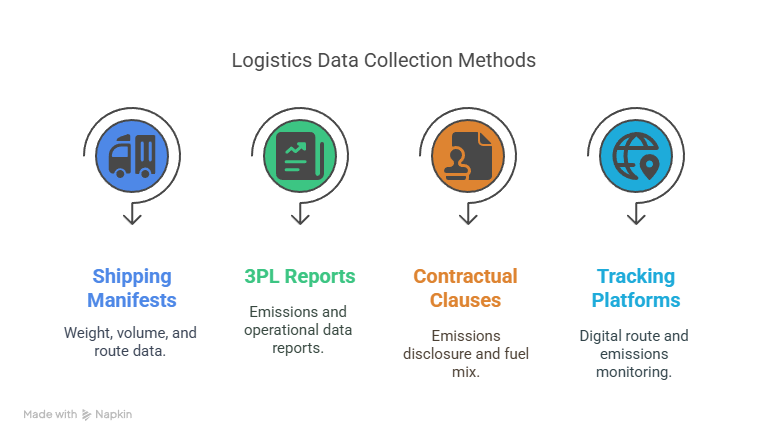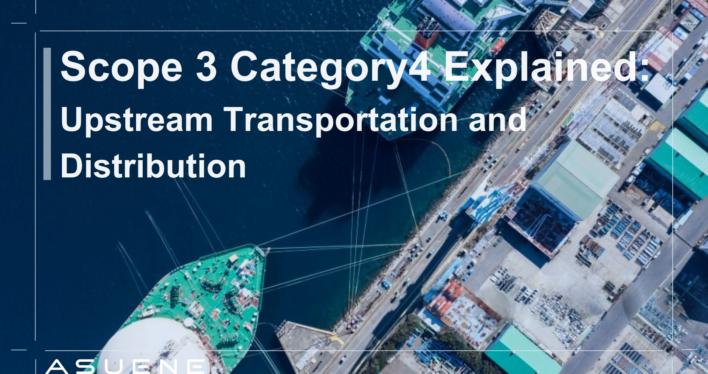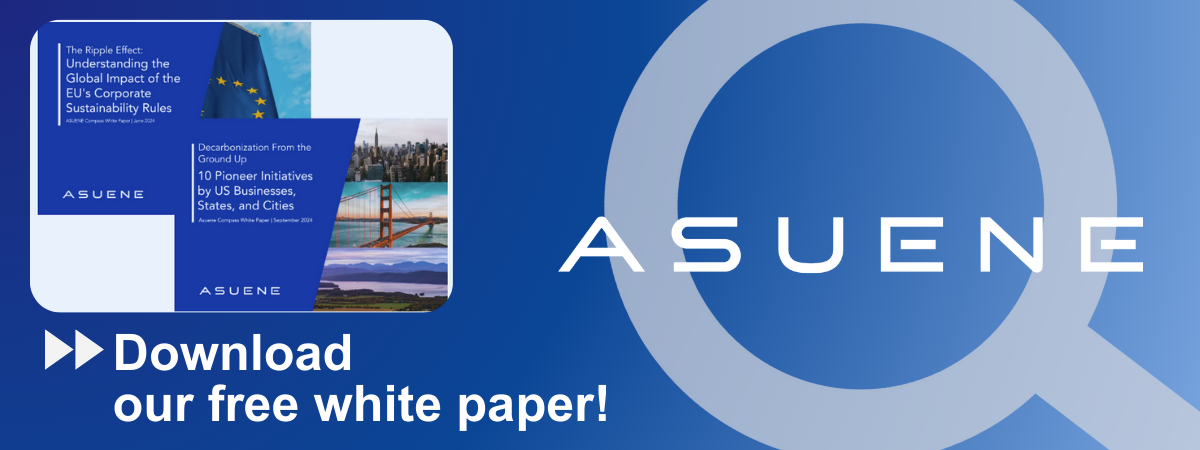- Article Summary
-
Overview of Category 4: Upstream Transportation and Distribution
Scope 3 Category 4 includes all emissions from third-party transportation and distribution of purchased products between a company’s suppliers and its own operations. This covers emissions from freight, warehousing, and logistics services—regardless of whether the company owns or operates the vehicles or facilities.

In today’s globalized economy, where complex and far-reaching supply chains are the norm, this category represents a significant portion of total Scope 3 emissions. It is especially relevant for sectors such as retail, automotive, electronics, and food and beverage. Transportation emissions are directly influenced by mode (air, road, sea, rail), distance, load efficiency, and fuel type.
Boundary and Scope Definition
Included in this category:
- Inbound logistics managed by external providers (freight forwarding, cargo shipping)
- Third-party warehousing services (temperature-controlled or not)
- Intermodal transport between manufacturing sites and suppliers
This category excludes company-owned logistics (Scope 1), downstream delivery to customers (Category 9), and transportation of capital goods (Category 2).
Aligned frameworks:
- EU CSRD and ESRS E1: Require transparency across upstream logistics
- GHG Protocol Guidance (2025 updates): Recommends disaggregating by transport mode and fuel type

Calculation Methodologies
Companies may calculate emissions using:
- Distance-Based Method: Emissions = distance x weight x emission factor, differentiated by transport mode
- Fuel-Based Method: Use fuel consumption data from third-party logistics partners
- Spend-Based Method: Estimate emissions using cost and average emissions per dollar spent (least accurate)
Where possible, primary data from freight service providers should be prioritized. Use emission factors that reflect actual routes, fuel types (e.g. diesel vs. biofuel), and vehicle efficiency.
Data Collection Strategies
Robust data collection for this category involves collaboration across procurement, logistics, and sustainability teams:

- Shipping Manifests: Capture weight, volume, and route of goods moved
- Third-Party Logistics (3PL) Reports: Obtain emissions statements or operational data
- Contractual Clauses: Require emissions disclosure and fuel mix data from logistics providers
- Tracking Platforms: Implement digital solutions for route and emissions monitoring
New EU regulations may require logistics companies to report embedded emissions to clients, making proactive supplier engagement crucial.
Emission Reduction Approaches
Reducing upstream transport emissions depends on optimizing both logistics and supplier relationships:
- Mode Shifting: From air and truck to rail or sea freight (where feasible)
- Load Optimization: Improve load factors and reduce empty return trips
- Sustainable Fuels: Work with carriers using biofuels, electricity, or hydrogen-powered vehicles
- Green Logistics Partnerships: Engage providers that disclose carbon data and follow decarbonization roadmaps
- Network Redesign: Regionalize sourcing and distribution to reduce transport distances
Strategic logistics planning can reduce emissions by 20–40% without significantly increasing cost.
Case Studies: Best Practices in Upstream Logistics Decarbonization
Nike
Nike optimized its inbound logistics by consolidating ocean shipments and partnering with carriers using biofuel blends. The company includes logistics emissions in its Scope 3 disclosures and aligns procurement decisions with freight efficiency. (Nike Impact Report 2023)
Nestlé
Nestlé redesigned its supplier transportation network to rely more on rail and barge in Europe. It also uses electric trucks in some regions and monitors third-party warehousing emissions. (Nestlé Sustainability Actions)
Cisco
Cisco collaborates with logistics partners to measure and reduce upstream shipping emissions. The company includes emissions KPIs in its logistics RFPs and prioritizes low-carbon carriers. (Cisco ESG Reporting Hub)
These examples show how leading firms integrate logistics decarbonization into supply chain resilience and climate strategy.
Why Work with ASUENE Inc.?
Asuene is a key player in carbon accounting, offering a comprehensive platform that measures, reduces, and reports emissions, including Scope 1-3, with expertise in decarbonization. Asuene serves over 10,000 clients worldwide, providing an all-in-one solution that integrates GHG accounting, ESG supply chain management, a Carbon Credit exchange platform, and third-party verification.
ASUENE supports companies in achieving net-zero goals through advanced technology, consulting services, and an extensive network.


